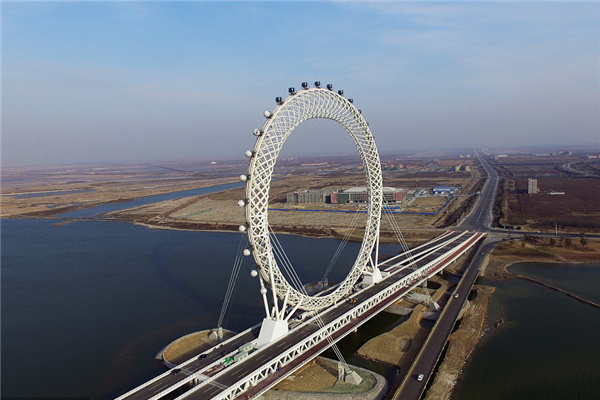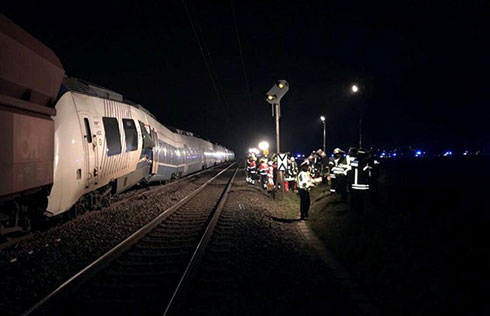

Lucas Ferreras watches freshly harvested barley and wheat from a bumper crop pile up outside barns in northern Spain, but with prices coming off and his costs mounting, expects a lean year ahead.
World grain prices soared last year, boosting turnover for the 1,500 farmers at the Agropal cooperative led by Ferreras in Spain's grain belt, in the northern region of Castilla-Leon.
Beating a winter drought by planting more grain last winter, Spanish farmers are expected by Spain's Agriculture Ministry to harvest 23.75 million ton this year, virtually level with last year. Castilla-Leon is expected to contribute 9 million tons to that total.
But key US markets recently peaked and rather than lasting prosperity, Ferreras says the commodities boom has brought him costlier fuel and fertilizers. Some farmers are already thinking of switching away from grain this winter.
While in America, demand for crops for biofuel has been a factor underpinning grain prices, Spain's fledgling industry accounts for a very small percentage of demand for grain, offering scant structural support for farmers like Ferreras.
"Last year was a one-off. We were just able to pay off our debts for once and invest in a bit more machinery," said Ferreras, watching a colleague weigh a tractor-load of barley in Duenas, about 250 km (155 miles) northeast of Madrid.
He is particularly concerned that an imminent flood of imports from the Black Sea to fill Spain's structural grain deficit will only exacerbate the downward trend in prices.
Europe faces a big grain crop this summer that has taken the shine off record high markets, although recent heavy rain has dented quality in some areas. This has particularly been the case in Black Sea regions, where much of the grain will only be suitable for use in animal feed.
"We're going to have problems with a market saturated by produce from Russia and Ukraine," says Ferreras, who is also national cereals spokesman for cooperatives' group CCAE.
Soaring costs
Last year's high prices helped boost Agropal's turnover by 29 percent to about 120 million euros in the market year to June 30.
But Ferreras estimates production costs have since risen by 60 percent. His crop manager Martin Aliste says that as farmers are squeezed between rising costs and lower prices, they will be less keen on planting grain this winter.
"We're having our best harvest in years but have barely time to savor it. Rising costs make it a bittersweet moment," Aliste says.
"I think we will go back to rotating cereals with other crops like sunflowers, which are cheaper to grow," he adds at a shopping centre run by Agropal as part of a bid to diversify revenues away from volatile crop prices.
The Agriculture Ministry said in its latest crop progress report the main reason Spain will have a bumper crop this year after a severe drought in winter is that farmers planted almost 9 percent more land.
However, broker Jesus Maria Fernandez, of the Spanish unit of grain firm Zeleny, has already forecast farmers will sow less grain this winter due to rising costs.
"It's cheaper now for farmers to grow sunflowers, and that is bad news for food supply in Spain," he says.
Hefty imports
Even in a good year, Spain typically needs to import about 12 million tons of grain a year - which cost 3 billion euros ($4.47 billion) in 2007 - as the country's soil is a lot less productive than in northern and eastern Europe.
Port sources have said that 250,000 tons of feed wheat is due to arrive in August alone in the main northeastern grain port of Tarragona, from Bulgaria, Romania and Ukraine.
Ukraine alone forecasts its grain harvest this year will soar to 43 million tons from 29.3 million last year, and expects to export 17.5 million tons in 2008-09.
"These shipments are helping to sink wheat prices a bit more," said a report from the Mercolleida grain exchange. "The big question everyone is asking is how far prices can fall."
Mercolleida is based in the northern town of Lerida, home to many animal feed makers, which in Spain as a whole consume an annual 12 million tons of grain.
Feed wheat for forward delivery in Tarragona has tumbled to about 182 euros per ton, from 265 euros in March, which has in turn forced down prices for domestic grain.
Bumper crop
In Castilla-Leon, wind turbines line the hillsides and harvesters hold up traffic on roads dotted with electric signs warning against the risk of forest fires in the baking August heat.
With just days of field work left, Agropal expects its harvest this year to jump by 10 percent to 180,000 tons of barley and 55,000 tons of wheat.
Including purchases from smaller co-operatives, Agropal sells up to 450,000 tons of grain a year, most of it to animal feed makers. Co-operatives say they handle 45-50 percent of the grain farmers have left after feeding their own livestock.
Europe's biofuel industry has added extra demand for grains that are turned into ethanol and for oilseeds like rapeseed that is made into biodiesel. But these industries have been hit by rising feedstock costs and in some countries by cheaper ethanol imports.
In Castilla-Leon, Spain's largest bioethanol plant has been idle since last September as high grain prices hit domestic demand for grain-based fuel.
Joint-owner Abengoa - with Ebro Puleva - said last month it planned to restart the 158,000-tonne-a-year plant in the hope that a new domestic law requiring petrol to contain a minimum of biofuel will revive demand.
Ferreras says he has sold barley to the plant in the past, but at below market rates.
"We'd be happy to sell to them again, but not at 120 euros a ton like last time, when the market was at 180," he says.
Agencies
(China Daily 08/25/2008 page11)













